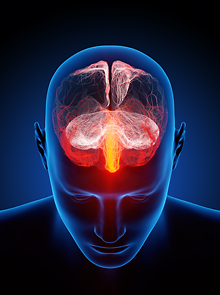Lurasidone Safe, Effective in Patients With Mixed Forms of Major Depression
Abstract
Accumulated evidence recently led to a more clearly defined form of major depressive disorder. The atypical antipsychotic lurasidone may be key to successfully treating these symptoms.
Evidence suggests that 25 to 45 percent of patients with major depressive disorder (MDD) present with manic symptoms below the threshold for hypomania (mixed features)—and the health consequences can be devastating.

In contrast with people with MDD only, those whose disorder is characterized by mixed features tend to have increased frequency of depressive episodes, increased risk of suicide, comorbid anxiety disorder and substance abuse, and greater functional disability. Based on growing recognition of the disorder, DSM-5 incorporated a new “mixed features” specifier that may be used to indicate the presence of subthreshold symptoms of the opposite pole in patients presenting with either depressive or manic episodes.
While little is known about the best treatment options for this disorder, some data suggest that standard antidepressants may be ineffective and associated with potential treatment-related complications, including suicidal ideation and behavior, manic switch, agitation, and impulsivity. Data from a study in AJP in Advancenow suggests that once-daily treatment with the atypical antipsychotic lurasidone may decrease depressive and manic symptoms in patients with mixed forms of major depression with limited adverse effects.
“Multiple lines of evidence, both preclinical and clinical, suggested that lurasidone might have antidepressant as well as mood-stabilizing effects, lending itself to use in this area,” study coauthor Antony Loebel, M.D., the chief medical officer and head of global clinical development at Sunovion Pharmaceuticals, told Psychiatric News. “We felt that if lurasidone were to have efficacy in bipolar depression, where an admixture of a few manic symptoms is not uncommon, it may also be useful for mixed forms of major depressive disorder.”
Researchers from Stanford School of Medicine and Sunovion Pharmaceuticals randomly assigned 211 patients aged 18 to 75 with a MDD (based on DSM-IV-TR criteria) who also reported two to three manic symptoms for at least two weeks prior to screening to take lurasidone (20 mg to 60 mg) or placebo daily for six weeks. Study completion rates were high in both the lurasidone group and the placebo group; the mean daily dose of lurasidone during the study was 36.2 mg.
The researchers found that lurasidone significantly improved depressive symptoms compared with placebo, as indicated by changes from baseline in Montgomery-Åsberg Depression Rating Scale score and the Clinical Global Impressions severity subscale score. Manic symptoms were also significantly improved in the lurasidone group, and treatment with lurasidone was associated with significant improvement both in anxiety symptoms and in patient-reported functional impairment.
The most common adverse events reported by the study participants were nausea (6.4 percent and 2.0 percent in the lurasidone and placebo groups, respectively) and somnolence (5.5 percent and 1.0 percent).
“In keeping with our hypothesis, we were pleased to see that lurasidone was associated with both antidepressant and antimanic treatment effects in this study,” Loebel said.
The researchers noted that the relatively low dosages of lurasidone used in this study suggest that the pharmacology of lurasidone in major depression with mixed features involves the serotonin and dopamine neuroreceptors to which lurasidone binds with high affinity. The researchers also thought the lower dosages of lurasidone may have contributed to its tolerability in this study.
“The study was clearly influenced by the ‘mixed features’ specifier incorporated in draft DSM-5 criteria, which were available at the time the study was designed,” Loebel added.
“The possibility that such patients might constitute an important subgroup of people who ended up resistant to standard antidepressant therapy also interested us. In general, the need for better treatments for patients suffering with this type of complex mood disorder was a major driver of our research.”
The study was supported by Sunovion Pharmaceuticals. ■



